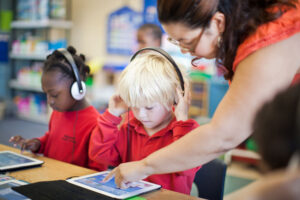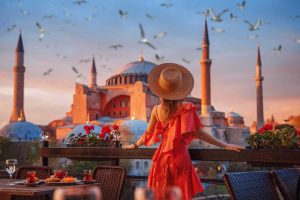
Cultural Heritage: Rome
Course Description
We aim to develop a deep appreciation of cultural heritage among Europeans and foster a sense of common identity. Consistent with the European Union’s unwavering commitment to cultural heritage, this program places a strong emphasis on the importance of protecting, promoting and sustainably using our cultural treasures. Recognizing that cultural heritage is a unifying force for Europe, the EU celebrates the vibrant mosaic of cultural diversity that shapes our collective identity.
At its core, this course aims to contribute to the European ideal in which diverse areas of culture, art and cultural heritage play a central role in promoting true openness and protecting fundamental rights. Our vision embraces the belief that open and interactive cultural processes facilitate coexistence and promote effective communication between different communities.
In addition to exploration, this program also integrates educational strategies specifically designed to increase sensitivity and awareness among participants. Through immersive learning experiences, our aim is to instill a deep sense of responsibility towards cultural heritage and encourage participants to become dedicated guardians of this priceless heritage.
This comprehensive educational journey invites participants to discover the unique and profound cultural heritage of Rome, the beating heart of Italy. Participants who are knowledgeable about the history, art, architecture and culture of Ancient Rome will be guided to uncover the cultural riches of this fascinating city.
In exploring Rome’s cultural heritage, we present it as an exemplary model, showcasing its numerous facets. From the breathtaking architecture of the Colosseum to the intricate art of the Vatican, each element contributes to the rich tapestry of Rome’s cultural heritage.
In the spirit of the European ideal, our course aims not only to explore but also to integrate the intrinsic value placed on cultural heritage. This is perfectly compatible with the strategic objectives of the European Union. Join us on this enlightening journey as we uncover the layers of history, art and culture that define Rome’s unique cultural heritage. Let’s actively integrate what we have learned into our educational practices by increasing awareness of cultural heritage among our students. Let’s embrace and celebrate together the diversity that enriches our common European identity.
Course Objectives:
- To create in Europeans a deep appreciation of their cultural heritage and develop a sense of common identity.
- To emphasize the importance of preserving, promoting and using our cultural treasures in a sustainable way, in line with the European Union’s commitment to cultural heritage.
- Provide a perspective that recognizes cultural heritage as the unifying force of Europe and celebrates the mosaic nature of the European Union’s cultural diversity.
- Provide strategies for integrating cultural heritage topics into lesson plans and teach methods to effectively reach students using digital tools.
- Provide participants with the skills to apply various interactive learning strategies to increase students’ sensitization towards cultural heritage
Learning Outcomes
Cultural Heritage Awareness:
- Participants from across Europe develop a deep understanding of cultural heritage.
- To enable participants to become more sensitive to their own cultural heritage and the heritage of other European countries.
Sense of Common Identity:
- Participants develop a common sense of identity with each other and with the European community.
- To foster greater commitment to and understanding of the core values of the European Union.
Preservation and Promotion of Cultural Treasures:
- To ensure that participants understand strategic approaches to the preservation, promotion and sustainable use of cultural heritage.
- To understand the importance that the European Union attaches to cultural heritage and to show greater respect for these values.
The Central Role of Culture, Art and Heritage:
- To ensure that participants understand the central role of culture, arts and cultural heritage in the core values of the European Union.
- To increase communication between different cultures and contribute to open, interactive cultural processes.
Developing Sensitivity and Responsibility:
- Participants develop a deeper sense of responsibility towards cultural heritage.
- To increase the sensitivity of participants towards cultural heritage with interactive strategies during the education process.
Discovery of Rome’s Cultural Riches:
- To enable participants to gain comprehensive knowledge about the history, art, architecture and culture of Rome.
- To provide participants with the skills to integrate these riches into their own educational practices while exploring the cultural heritage of Rome.
Integration of the Course into Education and Use of Digital Tools:
- Providing strategies for integrating cultural heritage into lesson plans and using digital tools effectively.
- Supporting training content with online resources, such as interactive materials and virtual tours.
Raising Awareness to Students:
- Developing teachers’ skills in applying interactive learning strategies to enhance students’ cultural heritage sensitivity.
- Emphasizing effective methods to encourage active student participation and interest in cultural heritage.
- Focusing on project development to create awareness and understanding among students.
Programme of training activities day-by-day:
Day 1: Cultural Heritage and European Identity
- Ice-breaking and trust-building activities for effective and positive interaction throughout the course
- Introducing participants’ schools
- Course Introduction and Participant Introductions
- The Role of the European Union in Cultural Heritage
- Definition and significance of cultural heritage
- European Union’s commitments to cultural heritage
- European Identity and Celebration of Cultural Diversity
- Europe’s cultural mosaic and the process of forming a common identity
- Educational Strategies for Teachers
- Integration of cultural heritage topics into lesson plans
- Interactive Learning Strategies
- Use of digital tools for interactive learning
Day 2: Cultural Heritage and European Art
- The Place of Art in European Identity
- The impact of art on cultural heritage
- European Union’s approach to art
- Contribution of Art and Cultural Heritage to Communication
- Communication between different cultures and open, interactive cultural processes
- Workshop on Interactive Learning with Digital Tools
- Use of digital materials
- Virtual tours and interactive resources
- Integrating Cultural Heritage with Sensitivity and Responsibility
- Strategies to increase sensitivity among teachers and students
Day 3: UNESCO Cultural Heritage of Rome – Discovery Day 1
- Colosseum: Architectural Marvel of Ancient Rome
- History, architecture, and cultural significance
- Roman Forum and Palatine Hill: Center of Ancient Politics
- Political and cultural center of Ancient Rome
- Pantheon and Agrippa’s Marvel
- The religious structure of Ancient Rome
- Piazza Navona and Art: Baroque Renaissance
- Zenith of Baroque art
Day 4: UNESCO Cultural Heritage of Rome – Discovery Day 2
- Vatican: Center of Art and Religious Heritage
- Vatican Museums, Sistine Chapel, and St. Peter’s Basilica
- Trastevere District: Traditional Roman Culture
- Folklore, traditions, and local art
- Capitol Hill and Museums: Ancient and Modern Art
- History and artworks of Capitol Hill
- Cultural Tours in Various Neighborhoods of Rome
- Interaction between unique cultures and neighborhoods
Day 5: Course Evaluation and Certificate Ceremony
- Course evaluation: Discussion and evaluation of the skills acquired, feedback, and course content
- Sharing course documents and records
- Awarding the Course Participation Certificate
To follow
Trainees will be given hard copies of all course materials that they can present to their colleagues in their organization to spark interest in the strategies learned during the training course.
In addition, a mailing list of participants will be created to exchange ideas/experiences.
Self-assessment materials will be provided.
At the end of the course, participants will fill out a questionnaire to get detailed feedback on the effectiveness of the training event.
Course Info
- Duration: 5 Days
- Location: Roma
- Cost: €80-Day
- Certificate: Yes
- Prerequisites: No










